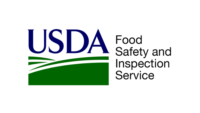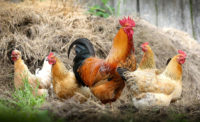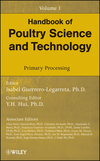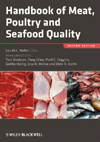USDA invests $1 billion in avian influenza strategy
USDA's HPAI investment features a five-pronged strategy.

US Secretary of Agriculture Brooke Rollins is announcing a $1 billion-dollar comprehensive strategy to curb highly pathogenic avian influenza, protect the US poultry industry and lower egg prices. This is in addition to funding already being provided to indemnify growers for depopulated flocks.
The five-pronged strategy includes an additional $500 million for biosecurity measures, $400 million in financial relief for affected farmers and $100 million for vaccine research, action to reduce regulatory burdens and exploring temporary import options.
“The Biden administration did little to address the repeated outbreaks and high egg prices that followed. By contrast, the Trump administration is taking the issue seriously,” Rollins wrote. “American farmers need relief, and American consumers need affordable food. To every family struggling to buy eggs: We hear you, we’re fighting for you, and help is on the way.”
USDA’s five-pronged approach to address avian flu
Biosecurity measures for US poultry producers
- USDA will expand its Wildlife Biosecurity Assessments to producers across the nation, beginning with egg-layer facilities, to safeguard farms from the cause of 83% of HPAI cases: transmission from wild birds. These additional safety measures have proven to minimize flu cases; the approximately 150 facilities that follow these protocols have had one outbreak.
- Biosecurity audits will be expanded. Free biosecurity audits will continue for all HPAI-affected farms. Shortcomings for HPAI-affected farms must be addressed to remain eligible for indemnification for future infections within this outbreak. Biosecurity audits will be encouraged and made available to surrounding, nonaffected farms.
- USDA will deploy 20 trained epidemiologists as part of its increased biosecurity audits and Wildlife Biosecurity Assessments to provide actionable and timely advice to producers on how to reduce HPAI risk at their facilities. These experts will help improve current biosecurity measures to focus on protecting against spread through wild birds in addition to lateral spread.
- USDA will share up to 75% of the costs to fix the highest-risk biosecurity concerns identified by the assessments and audits, with a total available investment of up to $500 million.
Farmer relief and poultry repopulation
- APHIS will continue to indemnify producers whose flocks must be depopulated to control the further spread of HPAI.
- New programs are being explored to aid farmers to accelerate the rate of repopulation, including ways to simplify the approval process to speed recovery.
- Up to $400 million will be available to support these costs for the remainder of the fiscal year.
Removing unnecessary regulations
- USDA is working alongside its partners at the US Food and Drug Administration to examine strategies to safely expand supply in the commercial market for eggs.
- USDA will minimize burdens on individual farmers and consumers who harvest homegrown eggs.
- USDA will work with farmers and scientists to develop innovative strategies to limit the extent of depopulations in HPAI outbreaks.
- USDA will educate consumers and Congress on the need to fix the problem of geographical price differences for eggs, such as in California, where recent regulatory burdens, in addition to avian flu, have resulted in the price of eggs being 60% higher than other regions of the country.
Explore pathways to reduce depopulation
- USDA will be focused on a targeted strategy for potential new-generation vaccines, therapeutics and other innovative solutions to minimize depopulation of egg-laying chickens, along with increased bio-surveillance and other innovative solutions targeted at egg-laying chickens in and around outbreaks. Up to a $100 million investment will be available for innovation in this area.
- USDA will work with trading partners to limit impacts to export trade markets from potential vaccination. Additionally, USDA will work alongside the US Department of Health and Human Services to ensure the public health and safety of any such approaches include considerations of tradeoffs between public health and infectious disease strategy.
- USDA will solicit public input on solutions and will involve governors, state departments of agriculture, state veterinarians, and poultry and dairy farmers on vaccine and therapeutics strategy, logistics and surveillance. USDA will immediately begin holding biweekly discussions on this and will also brief the public on its progress biweekly until further notice.
Consider temporary import-export options
- USDA will explore options for temporarily increasing egg imports and decreasing exports, if applicable, to supplement the domestic supply, subject to safety reviews.
- USDA will evaluate international best practices in egg production and safety to determine any opportunities to increase domestic supply.
The National Chicken Council's President Harrison Kircher released the following statement in response to USDA's HPAI strategy:
“We applaud Secretary Rollins and the Trump administration for their desire and commitment to combat HPAI across all species – a common goal shared by US broiler producers. Particularly, we appreciate the measured and science-based approach for the potential use of an effective and applicable vaccine for laying hens and turkeys, and the administration’s commitment to work with our trading partners to minimize any potential negative trade effects should a vaccine ever be used.
“As the administration works to remove unnecessary burdens to bring down the price of eggs, we will continue to encourage FDA to act on our petition to modify an Obama-era regulation that would release up to 400 million surplus broiler hatching eggs into the egg breaking market.
“We look forward to working with the administration, states, public health professionals and veterinarians to be part of the solution.”
Looking for a reprint of this article?
From high-res PDFs to custom plaques, order your copy today!



.png?height=200&t=1665625029&width=200)




